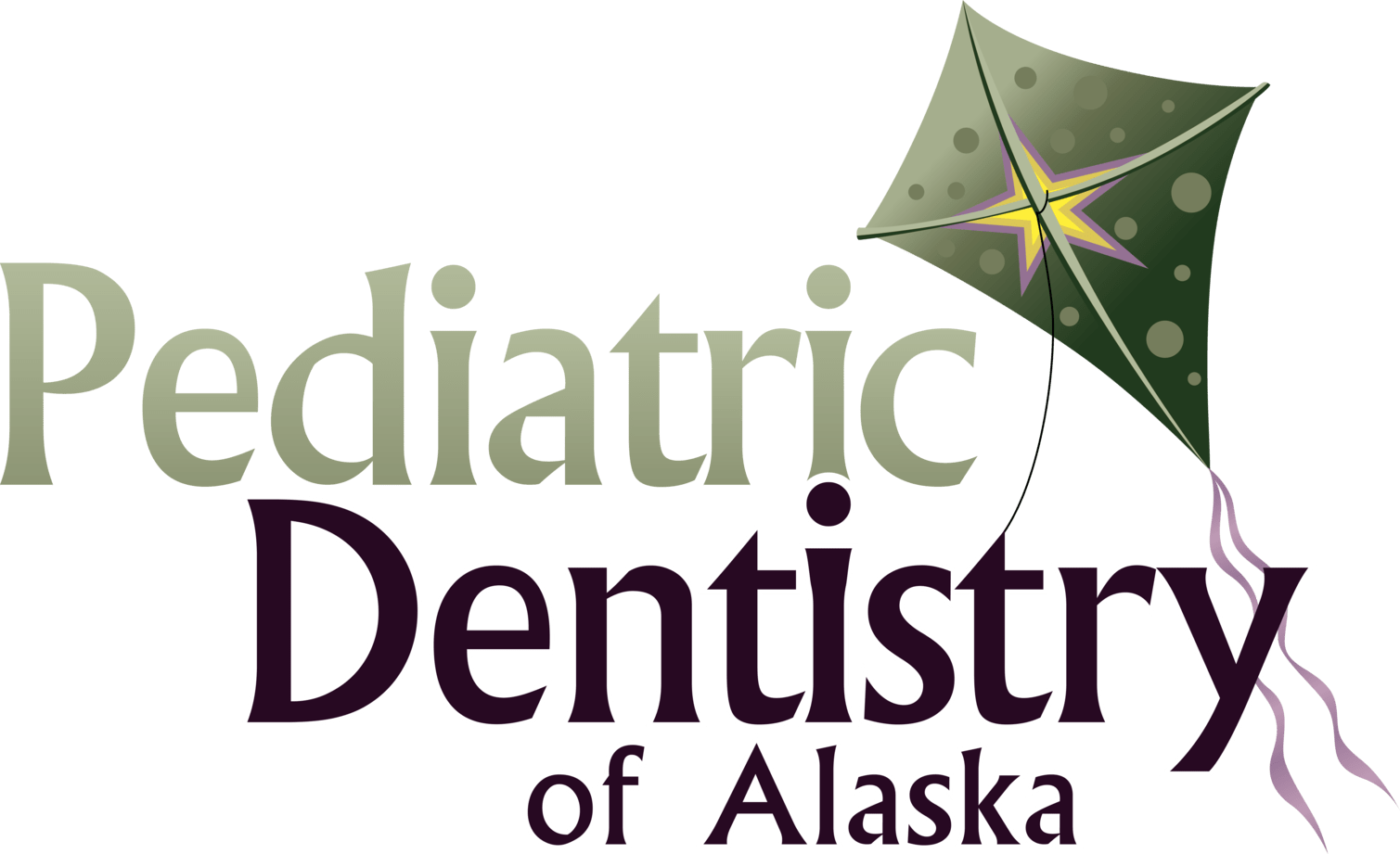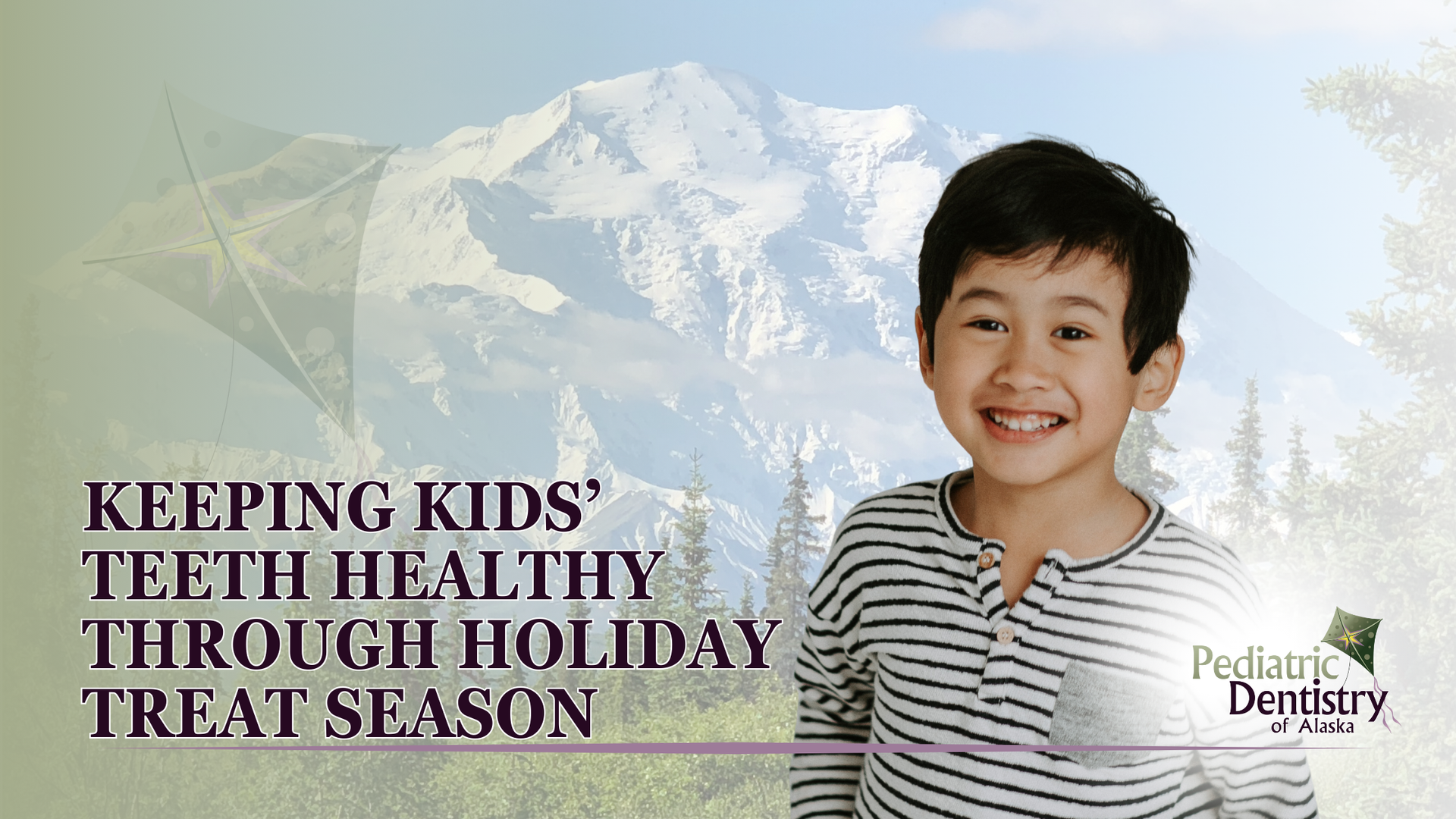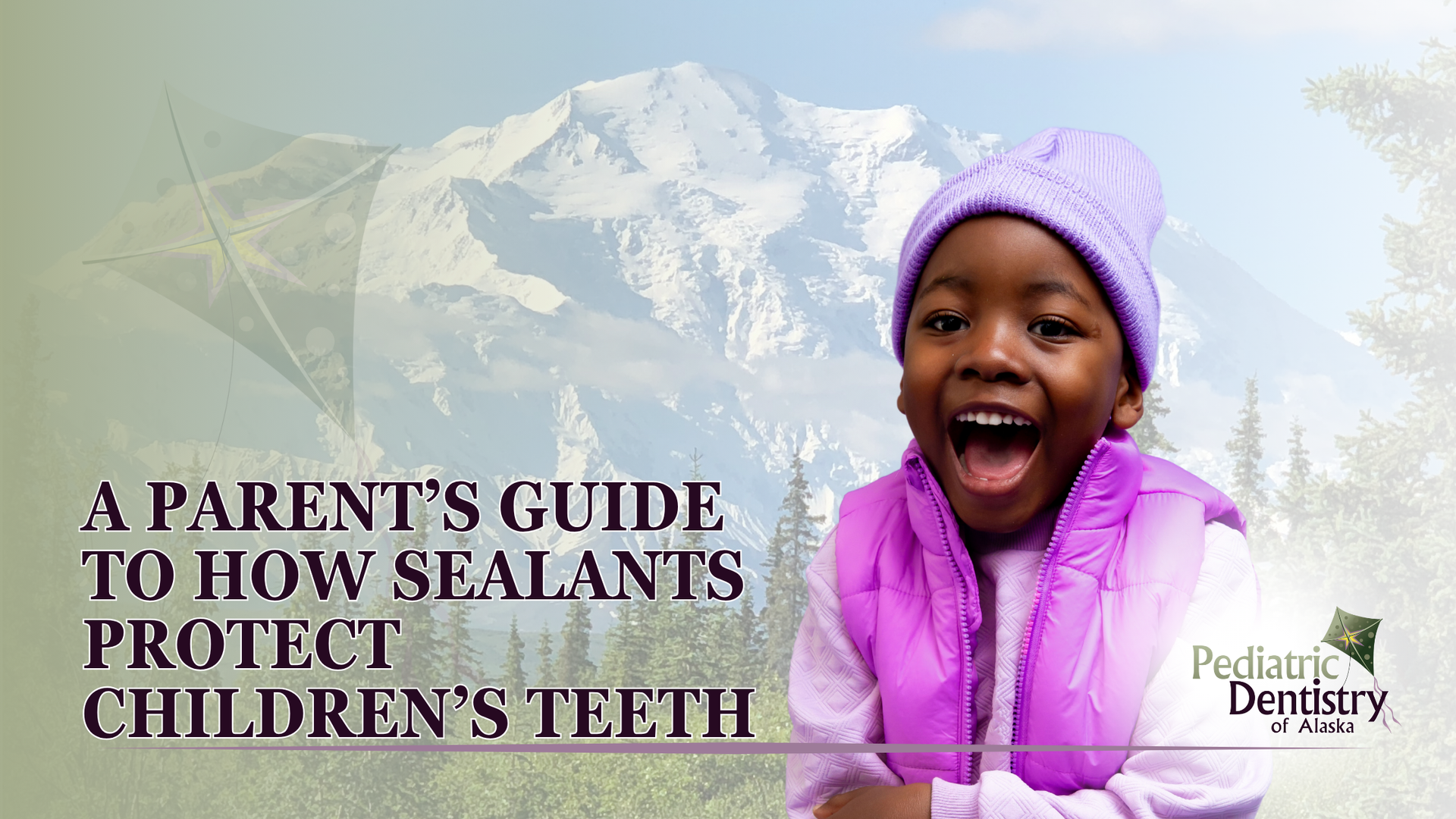Infant to Teen: Your Family’s Guide to Caring for Kid's Growing Smiles
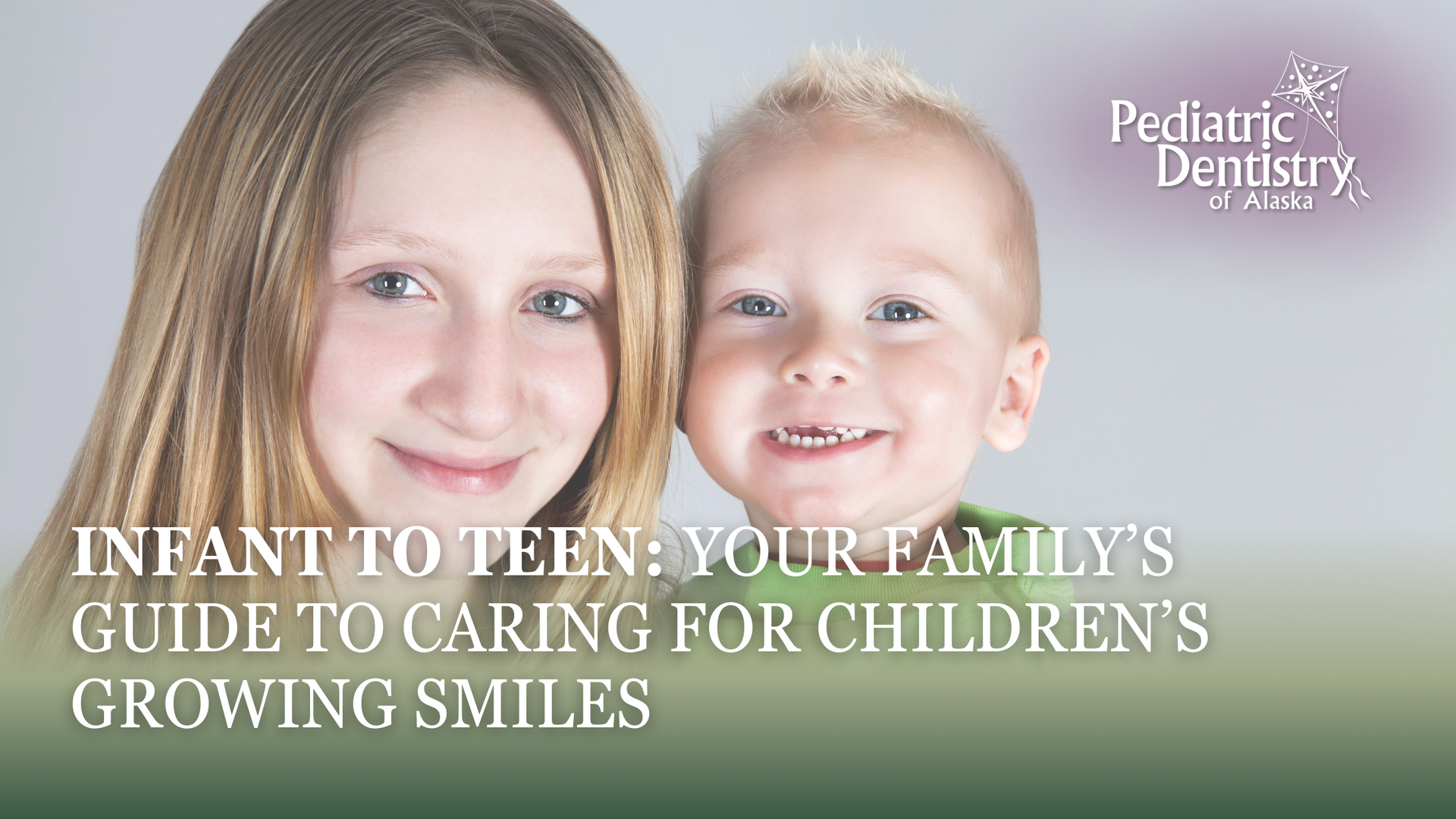
Source: Dr. Marketing
Dental care represents a lifelong process of commitment for patients. All that changes, as you age, is what you specifically come up against in matters of oral care and how you go about preparing and executing a healthy response. Firstly, parents will introduce their children to a toothbrush, marking the official start of the dental journey. Afterward, new occurrences and responsibilities will arise, but, as long as they avoid excessive negligence, their teeth and gums can remain healthily intact. Our team at Pediatric Dentistry of Alaska which is located in Palmer, Alaska and Wasilla, Alaska has put together an in-depth guideline for dental care that will help you, and your children, every step of the way.
Baby Oral Care in Alaska

When to start brushing
Children, with the help of their parents, should commence brushing as soon as the first tooth pokes out. Not only do baby teeth aid children in eating and speaking, they directly influence the position that the permanent adult teeth will settle into. The earlier that your child understands the value of regular toothbrushing, the better. Soft-bristle brushes and fluoride toothpaste are recommended once the milk teeth appear, a combination that will work to remove bacteria and plaque.
First tooth
Parents are advised to brush their baby's teeth, using a circular motion that begins and finishes in the same spot on each tooth, and have the child look in the mirror to see how proper brushing is achieved. For two minutes in the morning and evening, brushing should be a part of your child's daily routine. Also, teach them to spit instead of rinsing because it will preserve the benefits of fluoride. To further clean the teeth and gums, you can show them how to effectively use a wet washcloth or wipes. When children fail to get a head-start on their brushing and perhaps begin later than suggested, you might notice cavities in their mouth, in which case, you need to schedule a dental appointment.
When to arrange the first dental visit
Like the toothbrushing itself, your child should be seeing the dentist after their milk teeth arrive. Within six months of the first tooth appearing or by their one-year birthday, a dental assessment needs to be scheduled. Your child can then get comfortable with the entire dental experience, receive preventative treatments and follow-up appointments, learn more about brushing, and find out, in a moment of truth that both parties will be interested to hear the verdict on if you sufficiently cleaned their teeth throughout the early chapters of brushing. It's as much precautionary as it is educational since your children will eventually have to take their dental destiny into their own hands.
How to Care for Your Children's Teeth
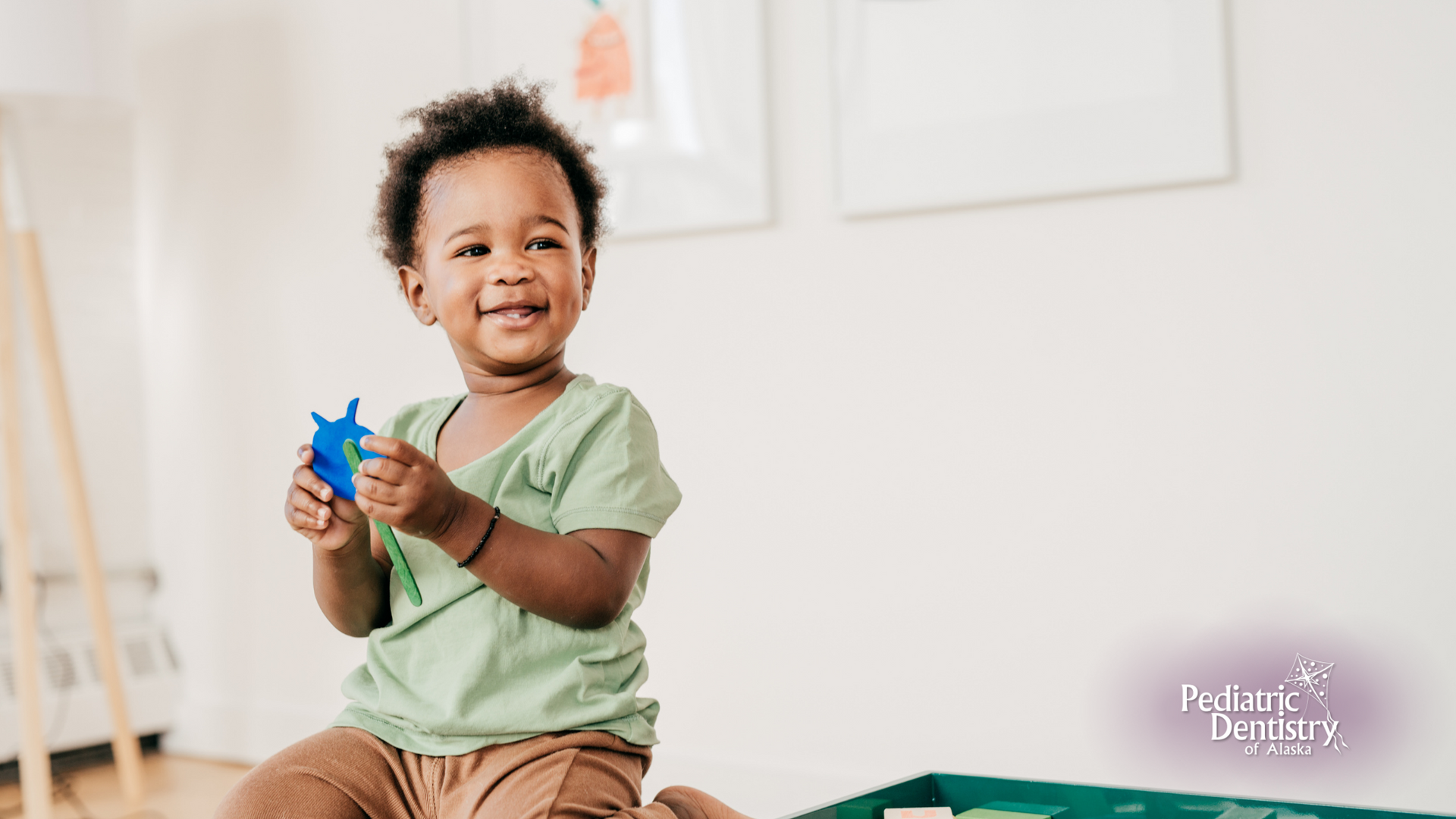
Creating their oral care routine
Although you are no longer obligated to standby, brushing your child's teeth as they attempt to wiggle away, you remain somewhat responsible for coming up with a healthy oral care system that they will follow. No need to overthink it; stick to the basics that they already picked up (brushing thoroughly for two minutes twice per day with fluoride toothpaste) and simply add to it. Discuss the importance of cleaning between their teeth, either with a string of dental floss or an interdental brush. If you didn't get through with your initial message, contact our team in Wasilla, Alaska and Palmer, Alaska. Our team is always here to help instill their oral care routine.
Watching what they eat
Teach your children to be mindful of their dietary decisions and set an early example by what you serve them, particularly with snacks. Over a prolonged period, consuming excess sugar can be detrimental to your child's oral health. A healthy mouth largely hinges on what and when you eat, so keep a limit on sugary snacks, including fizzy drinks, and combine their treats with meals. Those carbonated beverages are filled with artificial sweeteners that are acidic, which can easily obliterate enamel. When they do indulge in one of these drinks, get them to use a straw because it will divert the drink to the back of the mouth and potentially protect the teeth.
What to do when a tooth is lost
Whatever you do, don't panic; losing baby teeth is perfectly natural and your child's teeth will generally come out in the same order they arrived. From the age of 4 to 7, depending on when their teeth first pierced through the gums (the earlier that teething starts, the quicker those baby teeth will loosen), your child's milk teeth will fall out. Should their baby teeth not be coming until after their seventh birthday, then you would be wise to consult a pediatric dentist and ensure there are no underlying issues. After a tooth does come fully dislodged, the gum may experience a small amount of bleeding, so have them rinse their mouth out with water. In the event of continuous bleeding, get your child to bite down on a piece of gauze or clean towel, as it should stop the bleeding within an hour.
How to Guide Your Pre-Teen to Care for Their Oral Health

How adult teeth are coming in
Your child's permanent teeth will grow beneath the gums in the jawbone right under the baby teeth. Eventually, the root of each adult tooth begins to dissolve and the crown of the forthcoming permanent tooth forms in a pocket of space where the root of the baby tooth deteriorates. The baby teeth are loosened up and make way for the permanent teeth that push through the established pathway. While adult tooth eruption varies for every child, they often, predictably, come in pairs. Their first permanent teeth will be the molars that are considered extras, a label given to them because they aren't acting as replacements for baby teeth.
Braces now or later
There isn't necessarily a right time for children to get braces. It is more so about the suitable time for children to have a consultation if they require braces. An initial consultation will be determined by the issues occurring with your child's teeth and their overall dental development. Specific circumstances, like unaligned teeth or jaw growth being hindered, will then be examined by your child's orthodontist. A long-term plan will be created to alleviate any concerns and prevent future ones from manifesting.
Teen and Young Adult Dental Care in Alaska

Braces
When your child enters their teen years, an overbite, tightly-packed teeth, or gaps might become visible. Because of the early evaluation that you scheduled for him or her, their orthodontist can provide braces that will correct these concerns and handle any underlying issues. At Pediatric Dentistry of Alaska, we can monitor your child's worries immediately and safely address them at the most appropriate time.
Cavities
Cavities can be detected by several factors (pain, sensitivity, dental X-rays) and their severity will decide what treatment your child needs. Your options will be fluoride treatments (which may help restore the tooth's enamel if the cavity just formed, potentially reversing it), fillings (the most common treatment option used when decay has surpassed its early stages), crowns (a customized fitting that functions as a cover, replacing your tooth's natural crown), root canals (repairs a badly infected tooth by removing the diseased pulp and replacing it with a filling), and tooth extraction (for extremely decayed teeth that can't be restored).
Wisdom teeth
Found at the very rear of the mouth, wisdom teeth tend to take shape when your children are older, between ages 17 and 21. Two on top and two on the bottom, these molars are removed to avoid issues such as impaction, infection, cavities, bone loss surrounding the roots, lesions, a lack of room to brush and floss around the tooth, and any negative impact on nearby teeth.
Let us help you care for your baby's, toddlers, child's, and teen's smiles!

For an in-depth exploration of strategies to set your children on the path to a lifetime of outstanding oral health, don't hesitate to connect with the esteemed team at Pediatric Dentistry of Alaska which is located in Palmer, Alaska and Wasilla, Alaska. Our dedicated professionals are equipped to offer a wealth of information and personalized dental solutions designed for children of all ages. From preventative measures to specialized care, we are committed to nurturing the flourishing state of their teeth and gums. Reach out today and let us partner with you in ensuring your children's dental well-being for years to come.
We are the local Wasilla and Palmer pediatric dentist near you!

